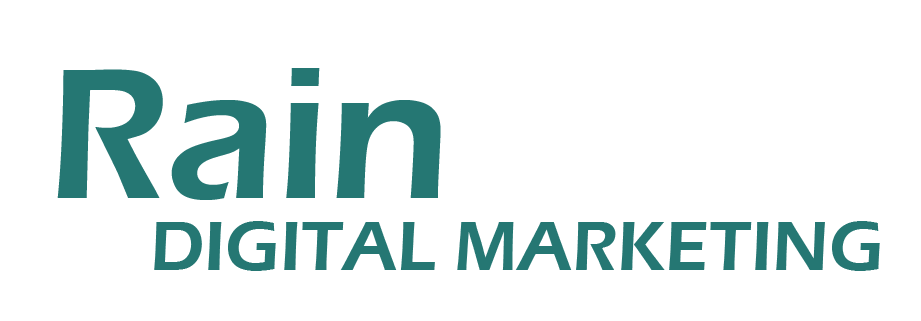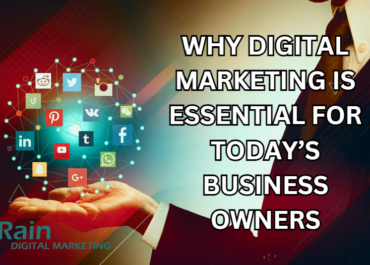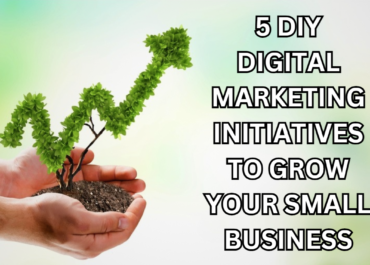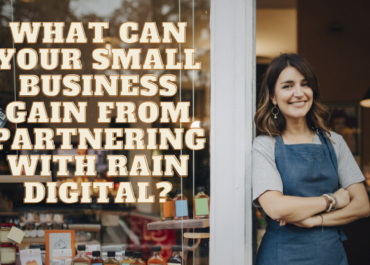Digital Marketing Bootcamp: Terms


The Danger of Confusion
Our goal in this digital marketing boot camp is to provide a crash course for anyone looking for guidance for their small business. In an effort to continue that theme, this blog is dedicated to understanding digital marketing terminology. Have you ever been in a room with your marketing team and struggled to grasp the technical detail of what they were trying to say? If you have, you are not alone since the field is constantly changing and new terms and concepts are added frequently.
While it’s not necessary to understand all of the terms, a good grasp is needed to have a meaningful conversation about performance and strategy. Marketing teams are more effective at executing strategy in any industry when they have input from the subject matter expert. Unfortunately, if the subject matter expert is not up to date on new digital capabilities or the terminology, they can only provide limited input and that leads to a less efficient campaign due to miscommunications.
Additionally, miscommunications can cause frustrations within a company and result in missed opportunities and loss of revenue for the business. The following digital terms and concepts are organized in a situation-based format so it is not necessary to memorize them. This allows you to find the right terms and concepts for your situation.

Campaign
At the heart of any good digital marketing effort is a good campaign. The purpose is to take the buyer from the top of the sales funnel to the bottom through insightful content, engaging campaigns, and relevant reminders. The best campaigns are capable of staying on the customer’s mind without pestering them enough to unsubscribe from the campaign. These terms are not all-encompassing but provide a good amount of information on campaign terminology.
Buyers Journey – This portion encompasses the entire process of bringing a customer from the first encounter with your campaign to the end of their purchase and ongoing relationship.
Lead Magnet – Content is king and lead magnets are the proof of this approach. They provide helpful information that is valued by the buyer on a specific subject. The goal is to provide something valuable enough to get the potential buyer’s information. If the document is valuable enough, potential buyers will provide their email information (most common) and other relevant personal data. This information is then used to make campaigns and budget usage more efficient.
Content – Anything used to stimulate interest and help engage an audience. This can be video format (Youtube, Snapchat, etc), text (blogs, white papers, etc), photo (Instagram, infographics, etc), audio (podcasts, audiobooks, etc). The goal is to entice the audience into becoming regular content consumers and potentially start the buyer journey.
Infographics – A visual image used to represent relevant information. These are helpful ways to increase your website’s search ranking as people like to borrow images for blogs or even use them as quick sources of information.
Display ads – A campaign ad in the form of an image used on an advertising display network. Shown as banner ads at the top and bottom of a page, mobile ads in smaller sizes, or any image aligning the side of a page on any website permitting ads.
Video Marketing – Much like display ads, video marketing is displayed on platforms permitting video ads. Some streaming platforms provide an opportunity to show videos including Youtube, Hulu, Tubi, Pluto tv, etc. Variety is the spice of life that also carries into managing digital campaigns. Providing an array of ad formats ensures your audience will retain the messaging and become a customer.
Landing page – This is the page on which a user lands after being directed by an ad or hyperlink. One of the goals for any campaign is to guide users to the landing page and help convert the lead into a buyer. It is also important when considering the audience’s overall experience.
TOFU -The top of the funnel is where most leads enter the buyer’s journey for any given product. The goal is to get them to the bottom of the funnel BOFU and convert them into the desired purchase or action. Your campaign should be able to demonstrate its value to the audience and facilitate their movement along the journey.
PPC – Pay-Per-Click is a campaign that utilizes search engine results to entice users to visit the desired landing page based on the result list. The benefit of this approach is that a campaign budget is only impacted if the user clicks on the link provided.
Email Marketing – This communication format is used for a variety of campaigns to promote your businesses’ products. Through sales or nurture campaigns, they enable a company to maintain contact with lead or previous customers. This format is very helpful when providing updates, new content, and promotions.
Spam – Spam is usually defined as unsolicited commercial e-mail, often from someone trying to sell something. This also happens when the subject line of an email does not match the content of the message. Lastly, if a person is being emailed constantly and never responds, it can qualify as spam as well. Spamming can lead your company to be blacklisted.
Blacklist – a list of people or things that are regarded as unacceptable or untrustworthy and should be excluded or avoided. This can be the result of spamming and being carried out by the relevant server providing access to sending and receiving emails. You can avoid this by ensuring you have an unsubscribe button as well as only providing relevant content.
Whitelist – a list of people or things considered to be acceptable or trustworthy. This happens when your audience adds you to their “contacts”. This provides you with future access to send emails without being pushed into a server pre-sorted category.
House List – This list is based on the information collected from your leads through lead generation or opt-in forms for email campaigns and other sources. Retaining this information is key to a business’s success as it provides audience touchpoints for future content and promotions.
Call to action (CTA) – A call to action (CTA) is a marketing term that refers to the next step a marketer wants its audience or reader to take. The CTA can have a direct link to sales.
Opt-In – Opt-in is an action that a consumer can take to participate in surveys, data collection, or mailing lists. The most common way we see opt-in methods implemented is through checkboxes. When presented with a checkbox, the user must take action to check the box – which denotes their consent. Consent helps you avoid being blacklisted for spam and provides a better overall customer experience.
Opt-In Marketing – Opt-in marketing is a form of permission marketing in which there is a formal opt-in process for receiving follow-up communication, offers, etc. In this format, marketers ensure the recipient is fully aware that he or she will get additional information at a later date, thus removing an unwanted element of surprise or anger when the information arrives.
Opt-Out – an instance of choosing not to participate in something. This can happen when sending irrelevant information to an audience. Providing this option is critical in reducing the potential for being blacklisted.
Lead Nurture – Lead nurturing refers to the process of capturing the attention of and attracting prospective customers who have previously indicated an interest in your product/services. Lead nurturing involves developing relationships with potential buyers at each stage of the buyer journey. Including new relevant content is key to any good nurture program such as blogs, white papers, etc.
Drip Campaign – Drip marketing is a communication strategy that sends, or “drips,” a pre-written set of messages to customers or prospects over time. These campaigns are used when executing lead nurture strategies.
Remarketing – This is a tactic used in campaigns used to pursue potential buyers who have visited your webpage and or taken action. It is helpful because it provides repetition which is key to keeping your brand top of mind with the audience.
Social Selling – This involves utilizing social media ad campaigns and organic social media profile content to drive lead generation. While the general approach is to develop a relationship with the potential buyer to initiate their journey, it can happen offline as well.
Click Bait – This is misleading content labels that entice an audience to click a link, usually a blog, or article to drive traffic or email open rates. Most often, this tactic has the reverse effect and reduces engagement, and drives a negative sentiment towards the brand.
BOFU – The bottom of the funnel is the last stage of the buyer journey. Most of the efforts were initiated to get the buyer to this point. Afterward, it is still good to put them into a drip campaign.
Thank You Page – This is the page shown after the customer submits an order for a given product. There are ways to ensure a customer’s life cycle by collecting their information and asking for permission to send them future communication so they can be entered into a drip campaign.

Performance
If the campaign is the heart of digital marketing, performance data is the pulse. Rarely will you create a campaign that does not need to be tweaked in some way or another. It could be the content, the messaging frequency, or design issues. Given the right amount of information, a campaign can be adjusted to increase engagement and improve the listed metrics below.
CTR – the percentage of people visiting a web page from an advertisement or organic search result. Clicking on the advertisement sends them to a web page for that product or service. A high click through rate indicates an effective ad and should be noted for future reference.
Bounce Rate (aka page performance) – This is the time a potential buyer spends on your website visiting multiple pages. If they only visit one page and leave, your bounce rate increases. A high bounce rate is bad, the lower the better.
Page Ranking – a value assigned to a web page as a measure of its popularity or importance, used to determine the order in which search engine results are presented. The goal is to have the highest page ranking as it indicates trustworthiness.
Web Performance – This is the time it takes the requested landed page to load and how long the user felt it took to load. Customer experience is extremely important and metrics like this help guide the overall strategy behind building a web page. Aim for a fast loading time to ensure your audience has a good experience when visiting the website.
SERP – The search engine results page is what a user sees after entering their requirements and pressing the search button. Typically they stay on the first page of results which is why optimization is important. It ensures a higher page ranking and better visibility to the preferred audience.
Conversion Rate – The number of people who take the requested action divided by the number of people who interact with the provided medium (advertisement, website visits, etc). Ideally, you want a higher percentage so the budget is more efficiently used.
Cost Per Click – Cost per click (CPC) is an online advertising revenue model that websites use to bill advertisers based on the number of times visitors click on a display ad attached to their sites. While a lower cost per click is desirable, it is not likely when the competition is intense.
Open Rate – This is the percentage based on the number of people who open the communication being sent via email, text, etc divided by the total number of people receiving the message. Higher open rates indicate a more effective campaign.
Engagement Rate – Similar to open rate but applied via social media platforms. The levels of interaction with followers that are generated from content created by a user. The engagement rate is used to measure the level of interaction by followers from content created by a user. It is calculated as total engagement divided by total followers, multiplied by 100.
CPM – Unlike the pay-per-click model, this model provides a price per thousands of ad impressions shown to an audience. There is no guarantee of action like pay per click but the pricing is typically lower to reflect that reduction in certainty.
Pixel Tracking – Tracking pixels are 1×1 graphics that are attached to items to help re-target visitors, track conversions from website visits, email opens, sales, etc. Their purpose is to ensure you are able to collect data that will be used to improve campaigns or website performance.
A/B Testing – This is a method used to better understand which changes most impact conversion rates for an audience. It can be used for website traffic, display ads, email campaigns, and more. The goal is to use the data to improve messaging to your target audience.

Strategy
So far we have discussed the heart (campaigns), the pulse (Performance, and now we will discuss the brain. Strategy is the overarching approach that guides the campaigns and dictates which metrics will be the most important. For example, if your overall goal is branding then the cost per thousand (CPM) will be the most important. On the other hand, if the goal of the team is to drive sales then cost per acquisition will be more important. These terms will provide insight into the overall approach to a company’s digital marketing plan.
SEM – search engine marketing is a form of Internet marketing that involves the promotion of websites by increasing their visibility in search engine results pages primarily through paid advertising. SEM may incorporate search engine optimization, which adjusts or rewrites website content and site architecture to achieve a higher ranking in search engine results pages to enhance pay-per-click listings.
Backlinking/link building – Backlinks are links from outside domains that point to pages on your domain; essentially linking back from their domain to yours. This can be accomplished by providing engaging content that people want to share via link. If your information is more educational, it will be key to reach out to bloggers to get them to link to your content until it gains the reputation of a subject matter expert. At this point people will find the information on their own and visit your website as a destination.
Keywords – Keywords are ideas and topics that define what your content is about. In terms of SEO, they’re the words and phrases that searchers enter into search engines, also called “search queries.” When creating ad campaigns, these words help guide the targeting of the ads so that they reach the intended audience.
SEO – SEO stands for “search engine optimization.” In simple terms, it means the process of improving your site to increase its visibility when people search for products or services related to your business in Google, Bing, and other search engines. The better visibility your pages have in search results, the more likely you are to garner attention and attract prospective and existing customers to your business.
Local SEO – Local SEO differs from general SEO in that it is focused on optimizing a business’ online presence so that its web pages will be displayed by search engines when users enter local searches for its products or services. Ranking for local search involves a similar process to general SEO but includes some specific elements to rank a business for local search. Depending on your industry, this metric may be more important than others. Restaurants are an example of businesses who will benefit from a focus in this area.
Global SEO – This tactic involves optimizing your content for a multitude of regions worldwide. You’ll need to create content that works for different regions and languages, as well as optimize that content for each region’s search engine results pages. This is more relevant if your business has a global presence or sells a product with global demand.
Persona – This is a fictional character created to facilitate marketing decisions. All decisions about the company’s marketing effort’s effectiveness will be gauged by this persona’s level of acceptance. This is an efficient way to limit the scope of effort when creating new products or communication.
Affinity group – This is a specified audience segment with common interests or goals. These groups are important when creating targeted ad campaigns. By specifying which group you are targeting, the messaging is not sent to an unresponsive group.
Targeting – the act of identifying the desired group then creating content towards that specific affinity group. It is useful when deciding which social media platforms are most relevant, which messaging is most important, and what focus the content should have.
Viral – Viral marketing is a sales technique that involves organic or word-of-mouth information about a product or service to spread at an ever-increasing rate. The internet and the advent of social media have greatly increased the number of viral messages in the form of memes, shares, likes, and forwards. While this should not be a strategic focus, it is helpful to have a strategy in place to leverage the attention should any of your content go viral.
Mobile Optimization – This strategy ensures that your content is formatted properly for mobile devices. Most often it is websites that receive the most focus for mobile optimization. This ensures the user has a pleasant encounter with your brand and can more easily make purchases or consume content.
Content Marketing – Content marketing is a form of marketing focused on creating, publishing, and distributing content for a targeted audience online. The goal of this content is to entice the audience to engage with the company and eventually become a member or customer.
Blogging – A central piece of content marketing is blogging. Blogging involves creating a discussion or informational website online. It can be an informational or diary format for influencers and thought leaders who aim to create a more intimate space for their audience. The goal is to create something people engage with and want more of which could help turn them into a member or customer.
ChatBots – a computer program designed to simulate conversation with human users, especially over the internet. This can help improve the customer experience and avoid long wait times for simple questions.
Social Listening – Social listening is the process of monitoring social media channels for mentions of your brand, competitors, product, and more. Social listening gives brands an opportunity to track, analyze, and respond to conversations about them on social media. This is a powerful tool for reputation management and ensuring that your brand is being perceived in a positive light while addressing customer concerns.
Artificial Intelligence – This approach enables machine learning and automated programs to manage your marketing efforts and engage with the consumer. It is capable but not limited to: managing social media posts, creating blog content, and creating email campaigns. As agencies put a premium on labor costs, AI helps by providing the ability to scale your business without using as much labor.
Crowdsourcing – Crowdsourcing is a sourcing model in which individuals or organizations obtain goods or services including ideas, voting, micro-tasks, and finances from a large, relatively open, and often rapidly evolving group of participants. In digital marketing, this can be using customer ideas to spark a new product idea via a contest, it can be receiving feedback on campaign performance and how it can be improved. Crowdsourcing can help brand engagement and organic reach and is seen mostly as a brand caring about the opinions of its customers.
OTT – Over-the-top marketing utilizes streaming platforms to drive ad impressions. This can be done via hulu, tubi, pandora, SoundCloud, or any other streaming platform that allows ads to run. This approach helps reach a wider audience and increase repetition and message retention within affinity groups.
Influencer Marketing – a form of social media marketing involving endorsements and product placement from influencers, people, and organizations who have a purported expert level of knowledge or social influence in their field. Often this is seen in the form of social media influencers weaving the product into their content.
Permission Marketing – The approach of asking permission before sending content and advertising to potential buyers. This is accomplished through like and subscribe content. If the reader, viewer, or listener enjoys your content, they are more likely to be responsive to your communication attempts and might put you on their whitelist.

Knowing is Half the Battle
That was a lot of information to absorb so bookmark this article and keep it for future use. Again, this information is not all-inclusive but provides enough context to help ensure your meetings with your agency or marketing team are more time-efficient and metric effective. When everyone has a similar education level on the technology, then conversations across separate groups are easier to manage. That effective communication can more clearly translate goals and expectations. It will take time to learn which terms and concepts are most relevant but with effort, the information becomes second nature. Remember, if you have the time you should manage your online presence, but if not you should hire a professional.







